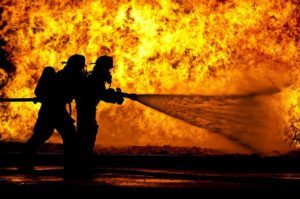
You Need a License
Drones flown for any purpose other than recreation require a trained and FAA licensed operator. The FAA has published these guidelines to help. Drone operators working for government entities can fly under an FAA Part 107 certificate, or entities may also apply for a Certificate of Authorization (COA) which could allow for self-certification of the UAS pilot or the ability to obtain emergency COAs under special circumstances.
For the most part, however, operators flying for public organizations must follow the same rules as commercial pilots. That means that the learning curve and adoption timeline should take into consideration not only the development of flight skills, but airspace and aviation rules. Part 107 certification requires testing at an approved facility.
Security is Important
The National Association of State Procurement Officials (NASPO) has published a whitepaper guide to procuring UAVs. Among other considerations, the paper points out that departments must be concerned with data security; something often overlooked in discussions of thermal imaging equipment and surveillance cameras. “UAVs can be hacked just like any other piece of technology,” says the paper. “Cybersecurity protocols must be taken into consideration, especially for the common data link (CDL) that connects the drone with the remote operating ground station and controlling pilot.” Departments should consider both the technology and the correct operator protocols to protect their data.
Try Before You Buy
StationCheck, a leading provider of automated equipment inspections and credential tracking for emergency services, says that departments have specific needs not only in hardware, but in purchasing. Service providers who want to work with them may want to provide a lease or trial option so that stakeholders can evaluate the technology before allocating budget.
“Fire departments are altruistic organizations supported by local communities to save lives and property for families and their neighbors,” says Brian Sroub, StationCheck’s president.
“Funding is always an issue whether it’s private industry or municipal government. Everybody wants to make sure the technology actually works and that it fits into budgets,” says Sroub. “One great way to get started is to make a simple version of the drone available to the fire department for a limited period of time. That way the department can test it out, and see what it can do.”
“This allows them to determine exactly what features are best for their municipality,” he points out. “Then the safety director will have the required information they need to make a proposal to city council, the mayor, county or whatever funding authority.” The department may need to issue an RFP: but the ability to test out the technology beforehand will help them to specify exactly what payloads and equipment they need.
As one of the fastest growing sectors in the industry, public safety organizations are important to drone services providers. And with the benefits that they provide to communities, drones are becoming more important to public safety.
Miriam McNabb is the Editor-in-Chief of DRONELIFE and CEO of JobForDrones, a professional drone services marketplace, and a fascinated observer of the emerging drone industry and the regulatory environment for drones. Miriam has penned over 3,000 articles focused on the commercial drone space and is an international speaker and recognized figure in the industry. Miriam has a degree from the University of Chicago and over 20 years of experience in high tech sales and marketing for new technologies.
For drone industry consulting or writing, Email Miriam.
TWITTER:@spaldingbarker
Subscribe to DroneLife here.